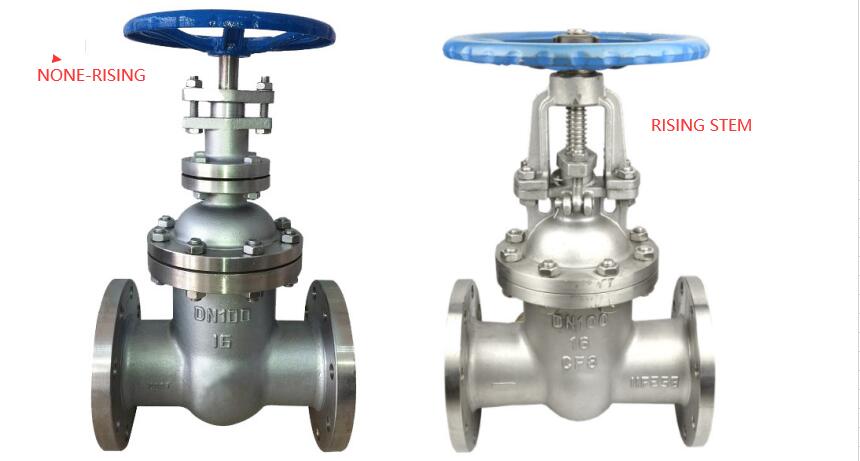Rising stem gate valves are usually made from cast or forged steel while non rising stem gate valves are more typically brass, bronze or cast iron. Non rising stem valves take up less space and rising stem valves require more space. … If a lot of stem is exposed, the valve is open.

According to the structure of the valve stem, the gate valve can be divided into:
1. Rising stem gate valve: the stem nut is on the valve cover or bracket. When opening and closing the gate, the stem nut is rotated to realize the rise and fall of the stem. This kind of structure is advantageous to the lubrication of the valve stem, and the opening and closing degree is obvious, so it is widely used.
2. Non rising stem gate valve: the stem nut is in the valve body, which is in direct contact with the medium. When opening and closing the gate, it is realized by rotating the valve stem. The advantages of this structure are: the height of the gate valve always remains unchanged, so the installation space is small. It is suitable for gate valves with large diameter or limited installation space. This kind of structure should be equipped with opening and closing indicator to indicate the opening and closing degree. The disadvantage of this structure is: the stem thread is not only unable to be lubricated, but also directly subject to medium erosion, easy to damage.
Main differences between rising stem gate valve and Non rising stem gate valve:
1. The lifting screw of the Non rising stem flange gate valve only rotates without up and down movement. The exposed one is only a rod, and its nut is fixed on the gate. The gate is lifted by the rotation of the screw, and there is no visible gantry; The lifting screw of rising stem flange gate valve is exposed, and the nut is close to the hand wheel and fixed (not rotating or moving axially). The ram is lifted by rotating the screw. The screw and the ram only rotate relative to each other without relative axial displacement, and the appearance is door shaped support.
2. The lead screw can’t be seen in the Non rising valve, but it can be seen in the rising valve.
3. When the Non rising stem valve is opened and closed, the steering wheel and the valve stem are connected together and relatively immobile. It drives the valve disc upward and downward through the rotation of the valve stem at a fixed point to complete the opening and closing. Rising stem valve is through the stem and steering wheel thread transmission to lift or lower the disc. The simple point is that the rising stem valve is that the disc moves up and down together with the stem, and the steering wheel is always at the fixed point.




